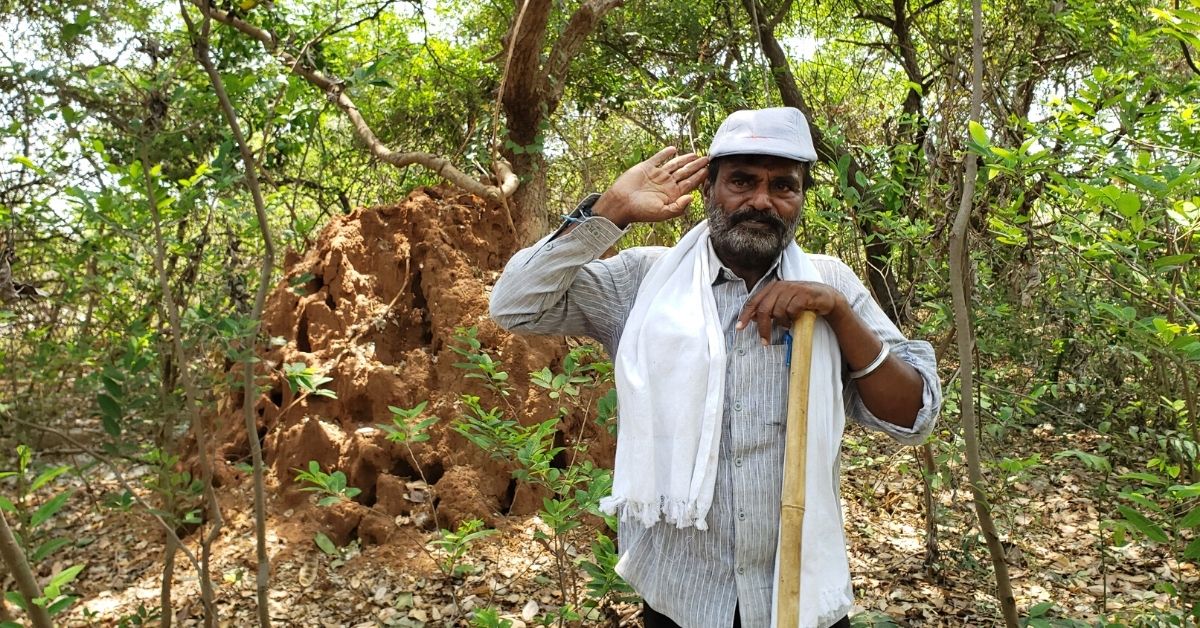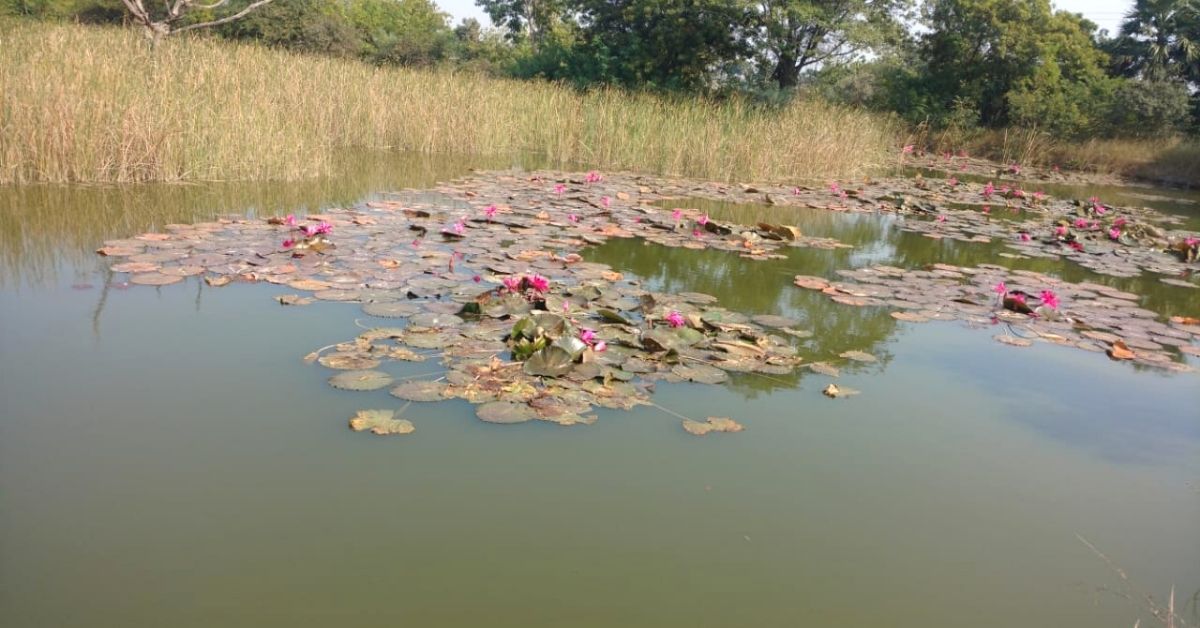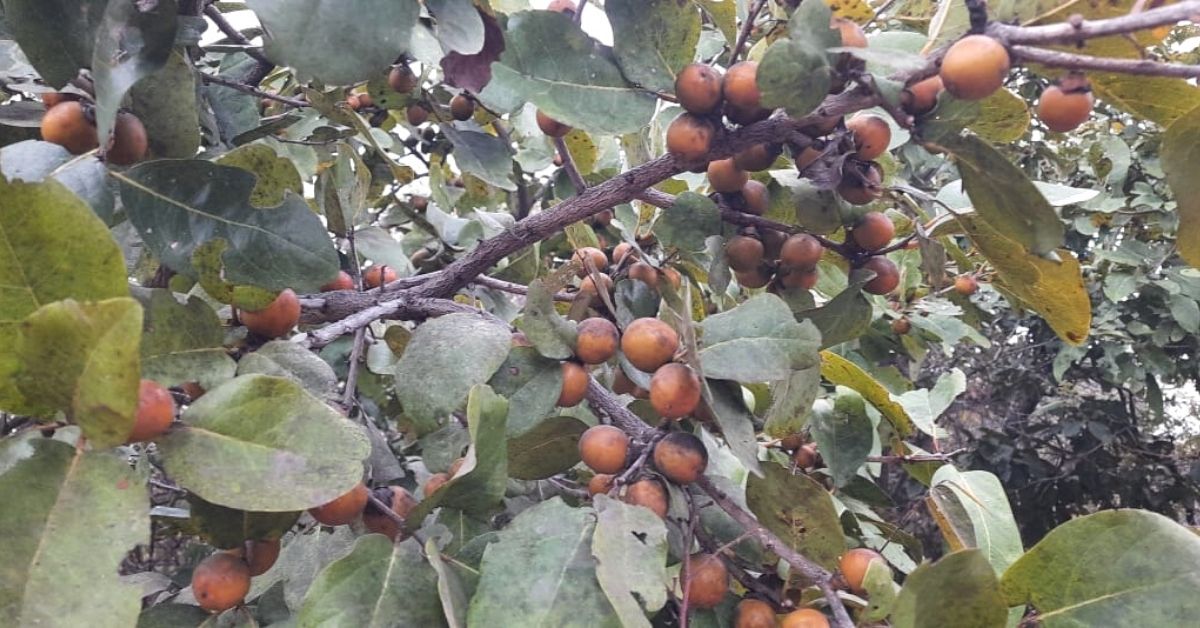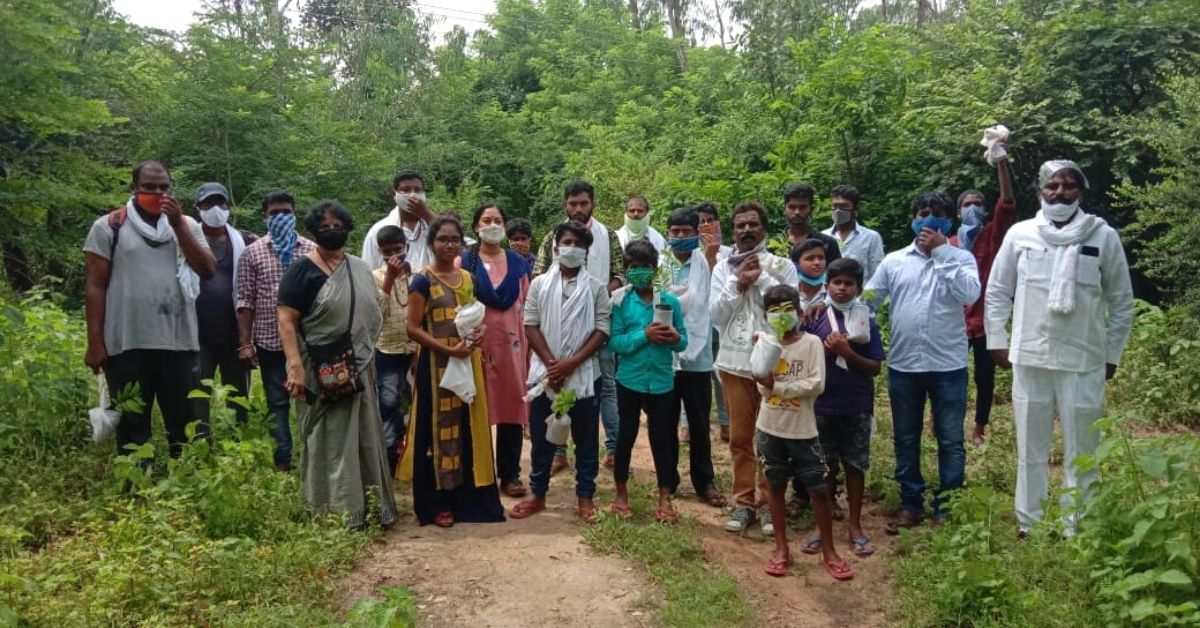68-YO Dedicates A Lifetime To Turn Ancestral Land Into Forest With 5 Crore Trees
In a village in Telangana lies a 70-acre forest teeming with lakhs of fruit-bearing trees and 13 ponds. The sole guardian of this land, Dusharla Satyanarayana, has been cultivating this ecosystem on his ancestral land for decades

In the village of Raghavpura, located in Telangana’s Suryapet district, lies a 70-acre forest teeming with lakhs of fruit-bearing trees. Some of these are over 50 years old, and some have grown in the last three decades. The area is home to hundreds of birds and several wildlife species.
From the outside, it looks like any other forest in various parts of southern India. But take a closer look, and you’ll find many unique aspects.
For starters, the forest has no protective fence, gates, or security guards. It does not belong to the government or forest department. Instead, the entire area falls under the protection of a single guardian — Dusharla Satyanarayana.
The 68-year-old has neither bought this land, nor leased it. Instead, he has used the ancestral land that he spent his childhood in to create a thriving ecosystem.

Work of exemplary passion
“I have been creating the forest since the age of four. The area was once a grazing land, where I used to spread tamarind and seeds of other plants. It was due to my passion and love for nature from an early age that I wanted to have trees around me,” he tells The Better India.
Dusharla says he spent his childhood around many birds and animals, and formed a deep bond with the biodiversity around him. He comes from Patwari family — landlords or land accountants of the village. He says that his family owned 300 acres of land.
“The Nizams ruled the area until the late 1940s. My ancestors worked under them and had control over the vast land, which they mainly used for pasteur, irrigation, and farming purposes,” he says.
In 1948, the family became the sole owner of the land, after the Nizam-controlled region merged to become an integral part of India. As Dusharla grew older, his love for nature only grew stronger.
Over time, the family’s ownership reduced to 70 acres. This, he says, was because great-grandfather and grandfather lost most of the property. “Relatives and friends tampered with documents and seized the land. This part of land is the last bit that has remained under my possession, and continues to face similar threats,” he says.
“My father still owned 70 acres, and I started spreading seeds to generate a forest. My parents did not oppose me as they realised my positive intent to contribute to the environment. Often, my classmates or villagers entered the plantations or tried to harvest resources. I always shooed them away,” he notes.
Today, his 50 years of efforts are visible in the tall trees thriving in the forest.

In his younger days, Dusharla travelled far and wide to places across India to collect seeds and saplings of forest species. He dug a canal to harvest rainwater and channelise it to irrigate the plants, and built ponds where lotus, fish, frogs and tortoises live in abundance.
In 1980, he graduated in agriculture science, and began working as a field officer for the Union Bank of India. He spent all of his savings to create and maintain the forest.
Today, this land thrives with tree varieties such as guava, Indian jujube, cluster fig, jamun, guava, carandas plum, mango, bamboo, and others.
Dusharla says that not even a single fruit or forest resource goes out for commercial purposes or human consumption. “Everything that grows here is consumed by thousands of birds, different species of snakes, rabbits, wild boars, foxes, squirrels, monkeys, peacocks, deer, and other wildlife. What is left unconsumed decomposes and plays an important part in rejuvenating the forest. A rough estimate shows about 5 crore trees, many of which have regenerated via the forest ecosystem itself,” he says.
He explains further, “A dense tree vegetation is said to be a forest if there are adequate plant species of medicinal value, agricultural and horticultural varieties, and significant flora to maintain the biodiversity. The forest is also recognised and determined by large trunks, fruit-bearing plants, and their distribution and regeneration.”
Dusharla says that on an average, there are about 10 lakh trees per acre in the forest. “Considering my forest has spread across 70 acres of land and left out a few empty spaces, there are over five crore trees,” he says.
He adds, “The birds pollinate and spread seeds, the plants grow into trees, the wildlife contributes its bit, and the forest also plays an important role in maintaining the groundwater levels.”
No compromises for the environment

Retired IFS officer Raghuveer, in a documentary highlighting Dusharla’s efforts, says, “Dusharla is a passionate nature lover, and it is impressive to see him devoting his life to creating a forest, especially without any support from the government or private individuals. Such efforts need to be replicated and sustained. His work is an inspiration for younger generations.”
Meanwhile, Dusharla notes that while neighbouring landowners and real estate developers often try to convince him to give the land away, he is adamant about protecting it at all costs.
“I have protected the land for the past three generations. Many family members express their willingness to commercialise the land. Some have even offered Rs 100 crore. But I will not let it go for non-environmental reasons. Even my children are not heir to the land,” he says.
He also notes that it is time that humans understand the importance of environmental protection and conservation. “Humans pose a danger to the existence of forests and wildlife. Wildlife exists only because of the presence of forests. If there is no home for them, they will venture out into human settlements. Beyond maintaining the environmental balance, the forests play a crucial role in preventing human-animal conflict, and hence their survival is crucial,” he says.
Edited by Divya Sethu
If you found our stories insightful, informative, or even just enjoyable, we invite you to consider making a voluntary payment to support the work we do at The Better India. Your contribution helps us continue producing quality content that educates, inspires, and drives positive change.
Choose one of the payment options below for your contribution-
By paying for the stories you value, you directly contribute to sustaining our efforts focused on making a difference in the world. Together, let’s ensure that impactful stories continue to be told and shared, enriching lives and communities alike.
Thank you for your support. Here are some frequently asked questions you might find helpful to know why you are contributing?


This story made me
-
97
-
121
-
89
-
167













